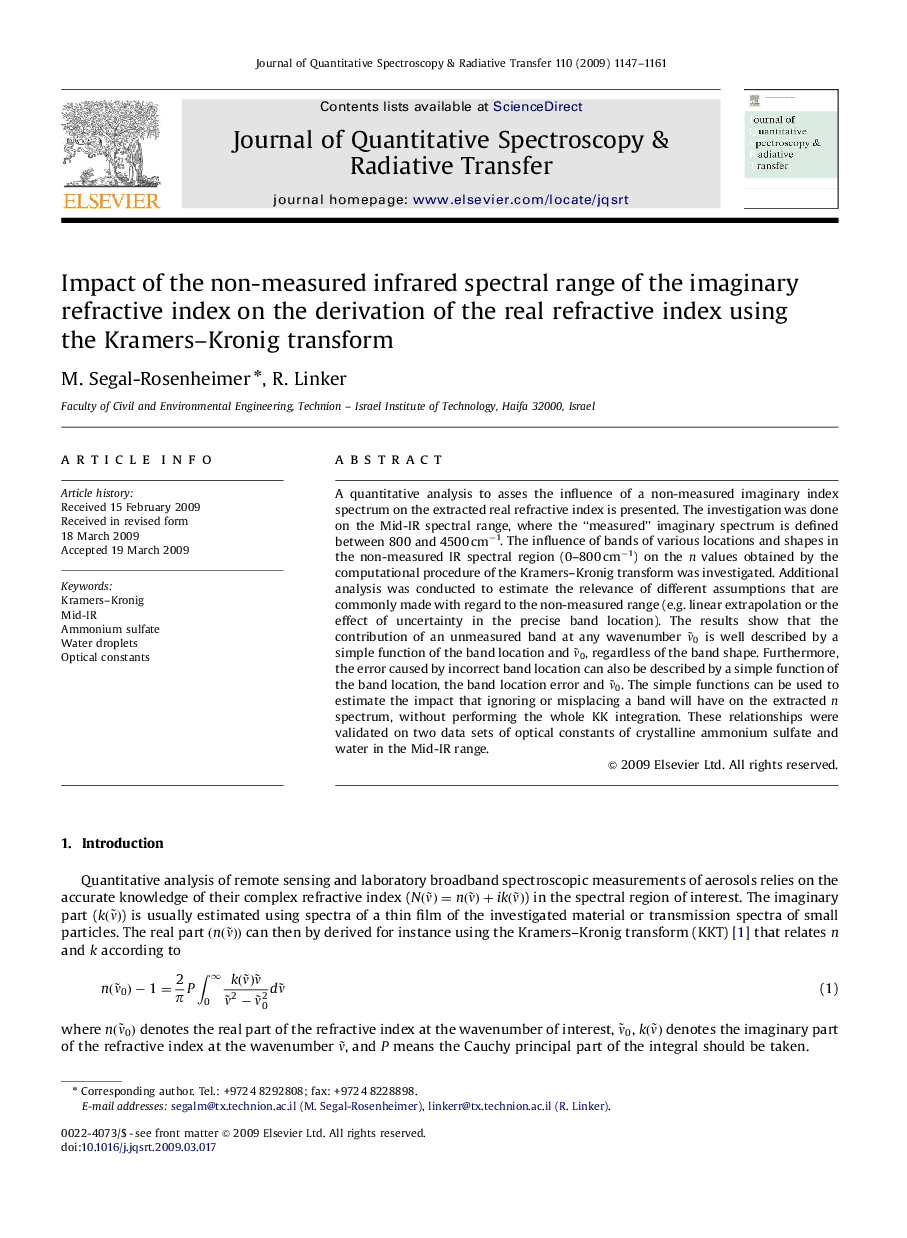| Article ID | Journal | Published Year | Pages | File Type |
|---|---|---|---|---|
| 5430043 | Journal of Quantitative Spectroscopy and Radiative Transfer | 2009 | 15 Pages |
A quantitative analysis to asses the influence of a non-measured imaginary index spectrum on the extracted real refractive index is presented. The investigation was done on the Mid-IR spectral range, where the ''measured'' imaginary spectrum is defined between 800 and 4500 cmâ1. The influence of bands of various locations and shapes in the non-measured IR spectral region (0-800 cmâ1) on the n values obtained by the computational procedure of the Kramers-Kronig transform was investigated. Additional analysis was conducted to estimate the relevance of different assumptions that are commonly made with regard to the non-measured range (e.g. linear extrapolation or the effect of uncertainty in the precise band location). The results show that the contribution of an unmeasured band at any wavenumber νË0 is well described by a simple function of the band location and νË0, regardless of the band shape. Furthermore, the error caused by incorrect band location can also be described by a simple function of the band location, the band location error and νË0. The simple functions can be used to estimate the impact that ignoring or misplacing a band will have on the extracted n spectrum, without performing the whole KK integration. These relationships were validated on two data sets of optical constants of crystalline ammonium sulfate and water in the Mid-IR range.
